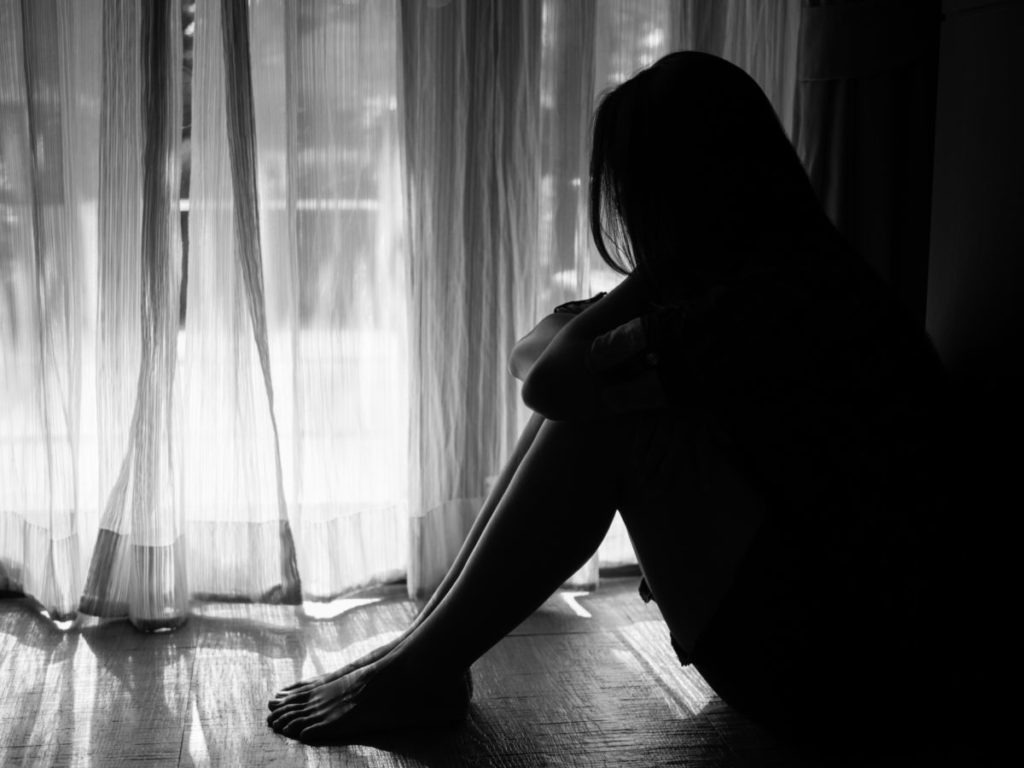If you or someone you know has talked about contemplating suicide, call the National Suicide Prevention Lifeline at 1-800-273-8255, open 24 hours a day, seven days a week. Online here.
BY LAURA SANTHANAM / PBS NewsHour
Suicides are on the rise among young Americans of all races, part of a grim national trend that has contributed to lower life expectancy overall, according to new federal data. But a separate study suggests that there are racial disparities in youth suicidal behavior, due in great part because some children lack access to vital resources.
While suicide was the 10th most common cause of death among Americans of all ages in 2017, it was the second leading cause of death among young Americans age 15 to 24, according to new data released Thursday from the National Center for Health Statistics and the Centers for Disease Control and Prevention. And no racial or ethnic group has been spared in this rising rate, said Sally Curtin, a statistician with the National Center for Health Statistics who has studied these suicide trends for years and served as the report’s lead author.
“The community at large needs to pay attention and figure out what’s going on, what’s driving these trends,” she said.

No racial or ethnic group has been spared in this rising rate among young Americans, according to federal data. CREDIT: Adobe Photostock
According to Heather Kelly, a clinical psychologist with the American Psychological Association, there is an urgent need for more research to seek out evidence-based ways to prevent suicide and help those who struggle with thoughts of self-harm, especially among veterans, the LGBTQ community, youth and young adults.
The results of another study published in the journal Pediatrics earlier this week suggested black boys and girls are more likely than their peers in other racial and ethnic groups to report suicidal attempts — and that revelation has mental health experts working to turn those numbers around, and prevent further tragedy.
READ MORE: Suicide among teens and young adults reaches highest level since 2000
A shocking rise in suicide attempts
Between 2000 and 2007, the suicide rate among youth ages 10 to 24 hovered around 6.8 deaths per 100,000 people. Then, the rate curved upward, reaching a rate of 10.6 deaths per 100,000 by 2017 — a 56-percent increase in less than two decades.
To some, the rise begged some basic questions: How well do we understand what behavior in youth signals suicidal risk, and is the mental health community well-positioned to help?
Michael Lindsey wanted to explore the prevalence of suicidal behavior among teens and whether race played a role in those outcomes. Lindsey, who directs the McSilver Institute for Poverty Policy and Research at the Silver School of Social Work at New York University, has worked for years to understand the ways race, class and income shape people’s access to resources and quality of life.
To find answers, Lindsey immersed himself in massive amounts of data from the CDC’s nationally representative Youth Behavior Risk Survey, which tracked the responses of more than 198,000 high school students between 1991 and 2017.
High school students who participated in all 50 states and the District of Columbia filled out self-administered questionnaires about their behavior and health, including drug use, sexual behavior, abuse and more. The survey does not include youth who have dropped out of school.
To offer insight about teen suicidal ideation, i.e. thoughts about one’s own suicide, a young person taking the survey is asked, “During the past 12 months, did you ever seriously consider attempting suicide?”
When Lindsey’s team analyzed decades of federal data documenting suicidal behavior, they noticed a distinct and disturbing pattern. They looked at reported suicidal ideation, plans, attempts and injuries by attempts. Overall, nearly one out of five adolescents had said they “are thinking about suicide,” between 1991 and 2017, according to Lindsey’s study.
“These findings suggest that continued concern and attention regarding suicidal behavior among high school-aged youth is warranted,” Lindsey and his team wrote, noting there has been more attention given to “campaigns to reduce youth suicide in the United States over the last decade.”
Among all U.S. adolescents, self-reported suicidal ideation and plans have dropped in the years they studied. But among black youth, suicidal attempts increased by 73 percent. That huge jump is significant because suicidal attempts are the biggest risk factor linked to dying by suicide.
Systemic problems, such as racism, poverty and police-involved shootings that involve black victims, may be driving these numbers, especially among young black Americans, Lindsey said. He also said that news outlets have “played a role in engendering hopelessness among black youth” in the ways the African American community is covered.
What can be done to save lives?
While more research is needed, Lindsey said black youth need improved access to mental health treatment.
Multiple schools in low-income neighborhoods may be forced to share a single mental health care provider, straining their ability to serve everyone’s needs. Historically, many black families also relied on church and prayer to combat mental illness, which, while potentially therapeutic, might not replace trained medical care. Lindsey also said that often stigma around needing, and getting, help has muted the potential for more open conversation. These factors combine to manifest in higher rates of suicidal attempts.
Kelly, who was not involved with Lindsey’s study, said that black youth often are confronted with a “lack of readily available, culturally appropriate and evidence-based suicide prevention options, coupled with a severe shortage of diverse and trained mental health workforce.”
To turn that around, structural change is needed, Kelly said, including greater investment in suicide prevention and intervention strategies that are tailored to the needs of black children and teens, improved access and availability of mental health services, stricter gun laws that govern firearm storage, a more diverse workforce contributing to mental health services and research, and a better understanding of persistent racial disparities in youth suicide.
Lindsey suggested that by increasing access to in-school mental health providers, schools could provide a vital lifeline and help reduce behavior that leads to a rising rate of deaths of despair.
Until such investments and changes are made, many black youth simply “are not connected to treatment in the ways that are necessary to combat their mental health struggles,” Lindsey said.
If you or someone you know has talked about contemplating suicide, call the National Suicide Prevention Lifeline at 1-800-273-8255, open 24 hours a day, seven days a week.
Copyright 2019 PBS NewsHour. To see more, visit pbs.org/newshour

















